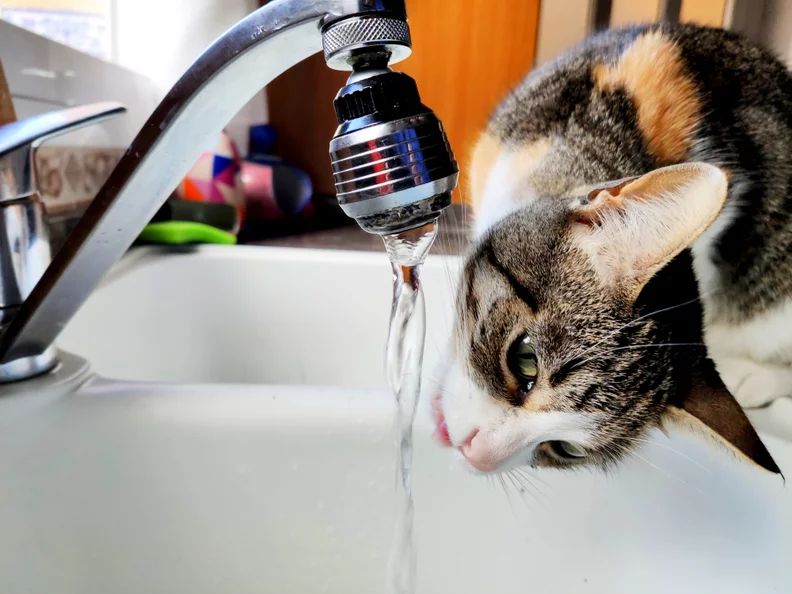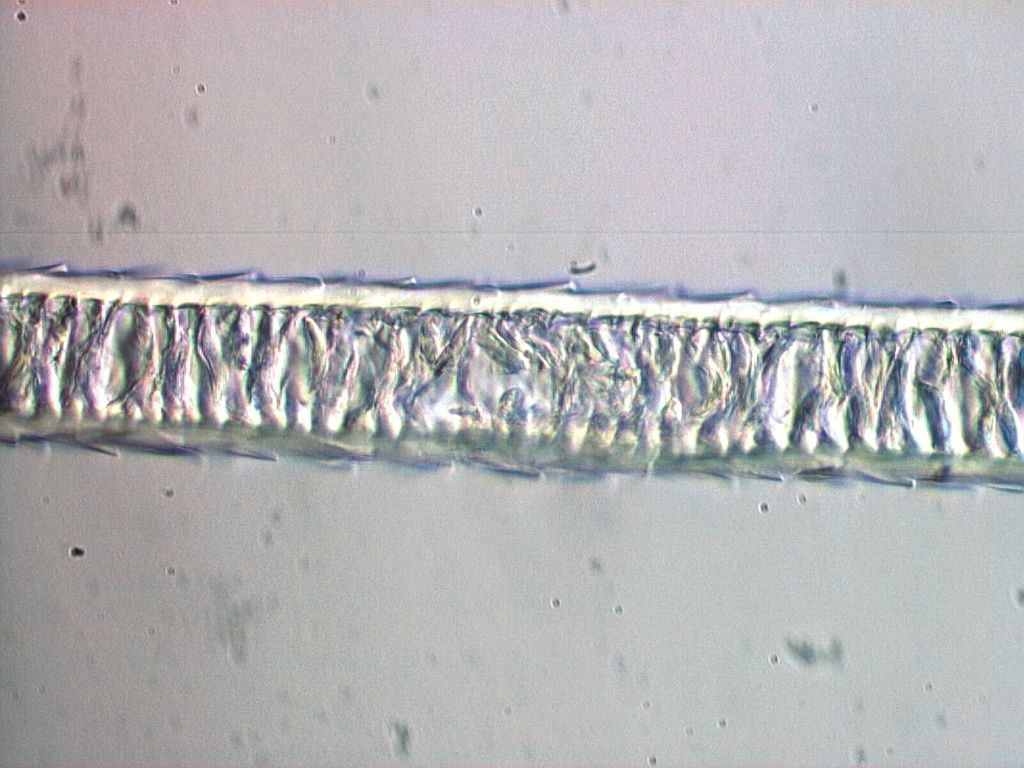The phenomenon of cats appearing to “run” or walk on water is fascinating and surprising to many observers. At first glance, it seems to defy the laws of physics and gravity for an animal to stride across the surface of a body of water without sinking. However, there are several factors that allow cats to accomplish this feat.
Cats have specialized anatomy and instincts that enable them to distribute their weight, move with precision, and take advantage of surface tension when crossing water. With rapid leg movements, water-resistant fur, excellent balance, and keen senses, cats can briefly run or walk across the surface of water by touching it without breaking through the surface tension.
In this article, we will explore the various anatomical and behavioral adaptations that allow domestic cats to gracefully run across water under the right conditions.
Anatomy
Cats have a unique paw and leg structure that enables them to lightly step across the surface of water without sinking. Their paws are large, soft, and slightly rounded, with retractable claws that splay out when stepping to distribute their weight (Source). Cats’ paw pads are cushioned and covered in fur, which helps make each step lighter and prevent them from penetrating the water’s surface tension. Their legs are slender yet powerful, allowing them to propel themselves forward with speed and agility. When cats run across water, they keep their legs mostly straight to avoid disturbing the surface too much. The anatomy of cats’ paws and legs gives them exceptional balance and stepping ability to briefly run on water’s surface before it gives way under their weight.

Weight Distribution
Cats are able to spread their weight out evenly when running across water so they don’t break the surface tension. According to this Huffpost article, cats have loose skin that allows them to spread their weight out over a large surface area. Their weight gets distributed over their toes and even their floppy belly skin helps displace the weight. This prevents them from sinking through the surface film of the water.
Cats have a relatively light skeletal structure in proportion to their body size. This helps keep their overall body weight low so it can be distributed evenly across their paws and bellies without breaking the water’s surface tension. The cat’s anatomy and musculature essentially act as natural floats to disperse their weight.
Velocity
For a cat to successfully run across the surface of water without sinking, it needs to maintain a high enough velocity. The faster a cat moves its paws, the quicker it can distribute its weight and generate force to essentially “skip” across the water’s surface before sinking in too deep.

According to an article on blog.catbandit.com, experts agree that cats are unable to sustain the speed and momentum required to continuously run or walk on water without sinking. While quick, light steps may allow brief water-running, most cats cannot maintain the velocity needed for extended water crossing.
So while short bursts of high-speed movement may create the appearance of running on water, cats are unable to maintain this speed and will quickly sink if attempting to continuously run across a body of water’s surface.
Surface Tension
Cats are able to walk on water due to the surface tension of water combined with their light weight and instinctual behaviors. Water molecules are attracted to each other and form a type of elastic film on the surface. This surface tension allows lightweight objects like insects, some lizards, and cats to walk or stand on the water without breaking the surface and falling in (Cats drink water using their amazing feel for physics). Cats instinctively distribute their weight and move carefully to avoid breaking this surface tension film. According to a study published in Science magazine, cats lap water into their mouths very quickly at a rate of 4 times per second. This allows them to utilize the water’s surface tension to pull the water up while closing their mouths fast enough to prevent gravity from pulling it back down (Study reveals physics of how cats drink). The water’s surface tension combined with the cat’s light body weight, instincts, and lapping method allows it to utilize this property of water to apparently walk on water.
Instinct
Cats have an innate ability to analyze surfaces and determine if they can walk across them without falling through. According to Rover, cats rely heavily on their senses of hearing and smell to locate sources of water in the wild. When they hear running water, it triggers an instinctual response to seek it out.

Cats are naturally cautious and will test surfaces like water before attempting to walk across. They use their keen sense of sight to visually inspect the surface tension and flow pattern. Their natural agility and quick reflexes enable them to navigate tricky surfaces.
Additionally, cats have an innate drive to play with moving water. According to the Cat Behavioral Alliance, providing outlets like pet fountains can satisfy this instinct in domestic cats.
Senses
Cats have extremely keen eyesight that helps them gauge the depth and movement of water surfaces. Their eyes have a high density of rod cells, allowing cats to see well in low-light conditions [1]. Cats also have a wide field of view spanning 200 degrees, giving them excellent peripheral vision [1]. Their elliptical pupils can quickly adjust in size to control light intake. All of these adaptations allow cats to accurately perceive depth and track motion when running across water surfaces.
Additionally, cats have a blind spot directly in front of their nose due to the position of their eyes [2]. This can make it difficult for them to accurately judge the water’s depth when drinking. However, their visual abilities give cats an advantage in gauging the water’s surface when running atop it.
Muscle Control
Cats have remarkable muscle control that allows them to make precise adjustments while running across water. As their weight shifts and the surface tension changes under their paws, cats can quickly tense or relax muscles to maintain balance and prevent falling into the water (https://wagwalking.com/cat/condition/involuntary-muscle-trembling). This muscle control is instinctual but also develops through practice and experience moving across uneven or unstable surfaces.
Kittens initially show jerky, uncoordinated movements when first trying to run across water. But as they grow and strengthen their muscles through play and exercise, their muscle control improves dramatically. Adult cats can make subtle calibrated contractions and extensions of their leg, back, and core muscles to keep their gait smooth and balanced during water running. This ability to adjust muscle tension many times per second enables their remarkable aquatic agility.
Fur Hydrophobicity
Cats have a layer of hydrophobic fur that repels water to help them stay afloat. Although their fur looks thick and dense, it is actually made up of two layers – a short, downy undercoat and a longer protective topcoat. The undercoat helps insulate cats from cold temperatures, while the guard hairs of the topcoat are coated with natural oils that make it difficult for water to penetrate (source). When cats come into contact with water, their fur traps air bubbles close to their skin. This layer of trapped air helps provide buoyancy to keep them from sinking. However, contrary to the myth that cats are completely waterproof, their fur can still become waterlogged if fully submerged. The water-repellent properties of the fur mainly serve to provide an advantage when cats happen to fall into water, allowing them to get out quickly with minimal water absorption.

Conclusion
In summary, cats are able to run across water thanks to a combination of physical adaptations and instinct. Their light weight and wide, paddle-shaped paws allow them to distribute their mass and avoid breaking the water’s surface tension. Cats also have excellent senses and muscle control that give them the balance and coordination needed for this skill. Additionally, their hydrophobic fur resists soaking up water. While running on water is likely an accidental or play behavior rather than an intentional skill, cats’ anatomy and agility make them well-suited for brief bursts of sprinting across water’s surface.
Though the specifics behind cats’ water running abilities require more research, it’s clear they possess several key traits that aid this behavior. With proper weight distribution, velocity, surface tension usage, and water-resistant coat, cats can briefly and playfully scamper over water in moments of excitement or prey drive. While not quite magical, their ability speaks to the careful balance and adaptations that allow cats to thrive as predators and athletes.

